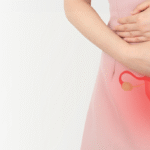Daily pain—whether due to arthritis, injury, stress, or chronic conditions—can significantly affect a person’s quality of life. While medications may provide short-term relief, long-term pain management often requires consistent and healthy lifestyle habits. By making simple but intentional changes in diet, exercise, sleep, and daily routines, individuals can reduce inflammation, strengthen their bodies, and improve their overall well-being naturally.
Importance of Regular Physical Activity
One of the most effective lifestyle strategies for pain relief is regular movement. Exercise:
- Increases blood flow to stiff joints and muscles
- Releases endorphins, the body’s natural painkillers
- Improves flexibility and muscle strength
- Reduces pressure on painful areas by correcting posture
Low-impact activities like walking, swimming, yoga, or cycling are especially beneficial for managing daily pain without overstraining the body.
Maintaining a Healthy Weight
Excess body weight puts added pressure on joints, particularly in the knees, hips, and lower back. Shedding even a small amount of weight can:
- Decrease inflammation
- Reduce joint strain
- Improve mobility
- Prevent pain from worsening over time
Maintaining a healthy weight also reduces the risk of other chronic diseases that may contribute to daily discomfort.
Eating an Anti-Inflammatory Diet
Diet plays a crucial role in controlling inflammation and reducing pain. Foods that help include:
- Leafy greens (spinach, kale)
- Berries and citrus fruits
- Fatty fish like salmon
- Nuts and seeds
- Olive oil and turmeric
Avoiding processed foods, sugar, and trans fats also prevents flare-ups and supports long-term relief.
Prioritizing Sleep and Rest
Lack of sleep can intensify pain sensitivity. Proper rest allows the body to repair itself. To improve sleep quality:
- Stick to a consistent bedtime routine
- Avoid screens and caffeine before bed
- Create a calm, dark sleep environment
- Use supportive pillows or mattresses
Better sleep reduces fatigue and helps the body better manage pain during the day.
Stress Management and Emotional Health
Chronic stress and anxiety worsen pain perception by tightening muscles and heightening sensitivity. Effective stress-relieving methods include:
- Deep breathing exercises
- Meditation or mindfulness
- Journaling or talking with a therapist
- Spending time outdoors or with loved ones
Mental wellness is deeply connected to physical pain relief.
Good Posture and Ergonomics
Bad posture puts unnecessary strain on the neck, back, and joints. Simple adjustments like:
- Sitting upright with support
- Adjusting workspaces for comfort
- Taking breaks from screens
- Using ergonomic chairs or cushions
…can significantly reduce musculoskeletal pain and prevent it from becoming chronic.
Staying Hydrated
Proper hydration helps maintain joint lubrication and supports overall cellular function. Drinking plenty of water daily:
- Reduces joint stiffness
- Flushes out toxins that may cause inflammation
- Supports tissue repair and recovery
Dehydration often leads to fatigue and worsened body aches.
Limiting Alcohol and Smoking
Smoking and excessive alcohol use negatively affect blood flow, tissue repair, and inflammation. Reducing or quitting:
- Improves circulation
- Boosts immune system response
- Enhances the effectiveness of physical therapy and medications
These lifestyle changes make a noticeable difference in how pain is experienced daily.
Building a Supportive Routine
A daily routine that balances activity and rest can prevent overexertion and manage pain better. Important habits include:
- Scheduled physical therapy or stretching
- Meal planning with anti-inflammatory foods
- Timed rest breaks during work or chores
- Keeping a pain diary to track triggers
Consistency creates a rhythm that supports healing and reduces surprises.
Conclusion
Lifestyle changes are powerful tools in managing daily pain naturally and effectively. Through regular exercise, nutritious eating, better sleep, and stress management, individuals can take control of their pain without overreliance on medications. These changes not only improve physical symptoms but also enhance emotional well-being and independence. By committing to healthier daily habits, long-term relief becomes achievable and sustainable.
FAQs
Can exercise make chronic pain worse?
Not if done correctly. Low-impact exercises, under guidance, actually reduce pain over time.
How long before lifestyle changes start showing pain relief?
Some feel improvement within weeks, but consistent effort over months leads to lasting results.
Are there specific foods to avoid for pain management?
Yes. Avoid processed foods, excessive sugar, fried foods, and refined carbs, as they can increase inflammation.
Is stress really linked to physical pain?
Absolutely. Stress tightens muscles and amplifies pain signals, especially in the neck, shoulders, and back.
Do lifestyle changes replace the need for medicine?
In some cases, yes. But for others, lifestyle changes work best when combined with medical care or physical therapy.







